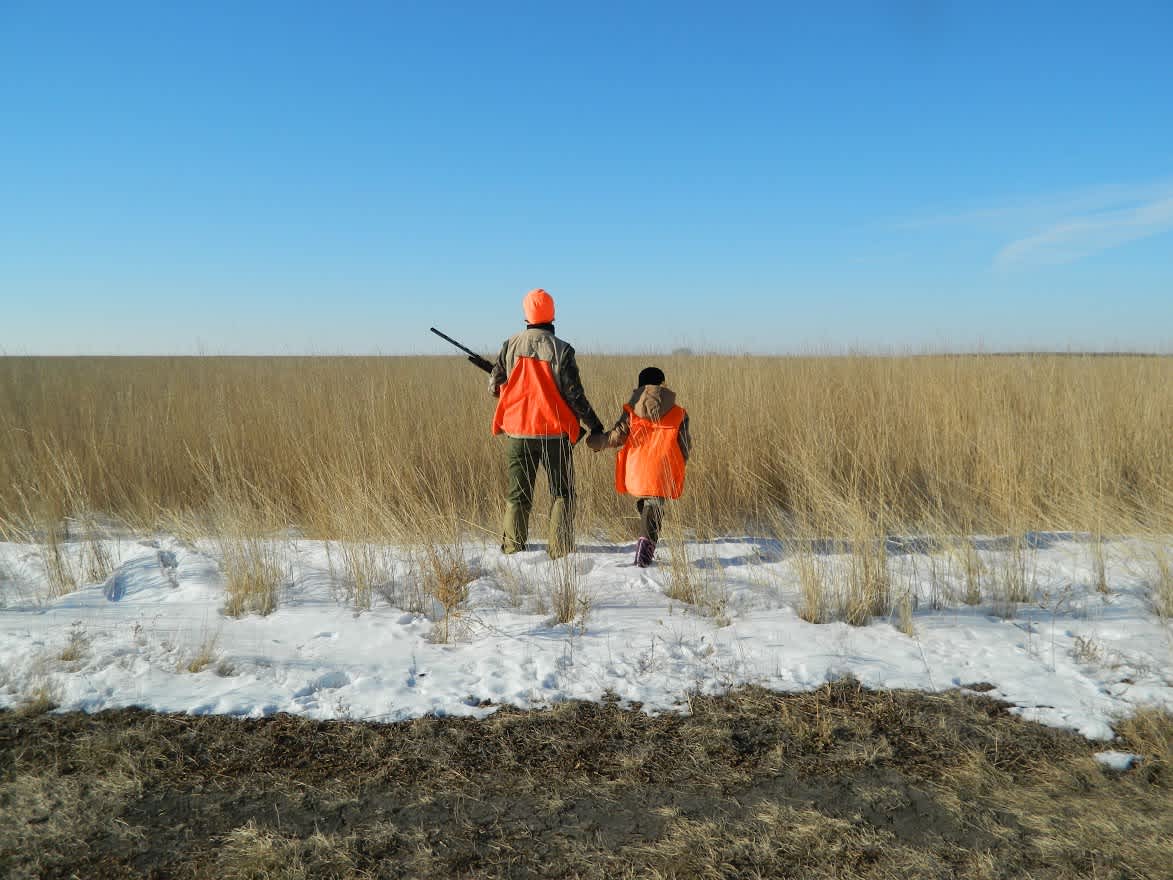Photos: A Bucket List Bird Hunt with Pheasants Forever
Britney Starr 12.11.14

Taking a road trip with my bird dog to South Dakota in hopes of connecting with wild ring-necked pheasants has been at the top of my upland bucket list for quite some time. I recently fulfilled that dream while on a media hunt and conservation forum sponsored by Pheasants Forever, during which I also learned about the positive impact farming can have on pheasant habitat. Below are photos from our trip.

After arriving in Aberdeen, South Dakota, I spent the first afternoon of our trip hunting Conservation Reserve Program (CRP) and Conservation Reserve Enhancement Program (CREP) public land with my German Shorthaired Pointer Wesson. He took to the change of scenery quite well, and enjoyed hunting in terrain that differed from our usual Michigan North Woods. I was impressed with how well he behaved in the wide-open spaces of SoDak, and adjusted to the different style of hunting. No shots were fired during day one, but day two would prove to hold more opportunities for us.

Pheasants Forever chapters focus on acquiring land for public use as one of their main objectives. In South Dakota, hunters can enjoy more than 5 million acres of public land for hunting, including CRP, CREP, and waterfowl production areas. Pheasants Forever has also conserved 360,000 historical acres and fostered 24,000 historical habitat projects in the state.

After meeting up with the rest of the members of the group, I spent the morning of day two at Johannsen Farms Outfitting, learning about how blending production agriculture and farming with habitat management can have a positive impact on pheasant populations. Here, Eric Johannsen shares his delayed/rotational grazing (five days of grazing an 80-acre parcel with 180 to 200 cows and then resting the parcel for seven weeks) and no-till methods with the group. He’s been practicing these methods on his farm near Tolstoy, South Dakota for four years, and has seen a large increase in bird numbers on his property.

After Eric’s presentation, Casey Weismantel, outdoor media representative for the Aberdeen Area Convention & Visitors Bureau, presented Randall Stotz with the first annual Habitat Stewardship Award (presented by HuntFishSD.com). Randall, a farmer in the Tolstoy area, was nominated by Eric for the award.

Fresh pheasant tracks were prevalent on Johannsen’s property—an encouraging sign for an uplander.

Jared Wiklund, public relations specialist for Pheasants Forever, shows off a rooster he took while hunting a cornfield on Johannsen’s farm—a field that held somewhere in the range of 400 to 500 birds. I would say Johannsen’s habitat management practices are paying off!

As day two came to a close, the group pitched in to skin and clean the 21 roosters that were taken. Not surprisingly, I discovered my pheasant’s crop stuffed with corn.
On day three, Dennis Foster of Dakota Pheasant Guide took the group hunting in the Groton area.

The group on day three successfully downed 16 birds.
Standing left to right: Tom Carney, Dennis Foster, Brian Strickland, Luke Hagen, Casey Weismantel, Casey Stemler, and David Hendee
Kneeling left to right: Britney Starr, Jodi Stemler, Sophie Stemler, and Jared Wiklund.

One of my favorite parts of the hunting experience, as a whole, is the opportunity to eat game meat. After putting my birds on ice for the long drive back to Michigan, I vacuum sealed and stuck them in the freezer for use this Christmas. The pheasant tail feathers will be used in a holiday wreath to adorn my front door, and will serve as a reminder of my first trip with Wesson to SoDak.

